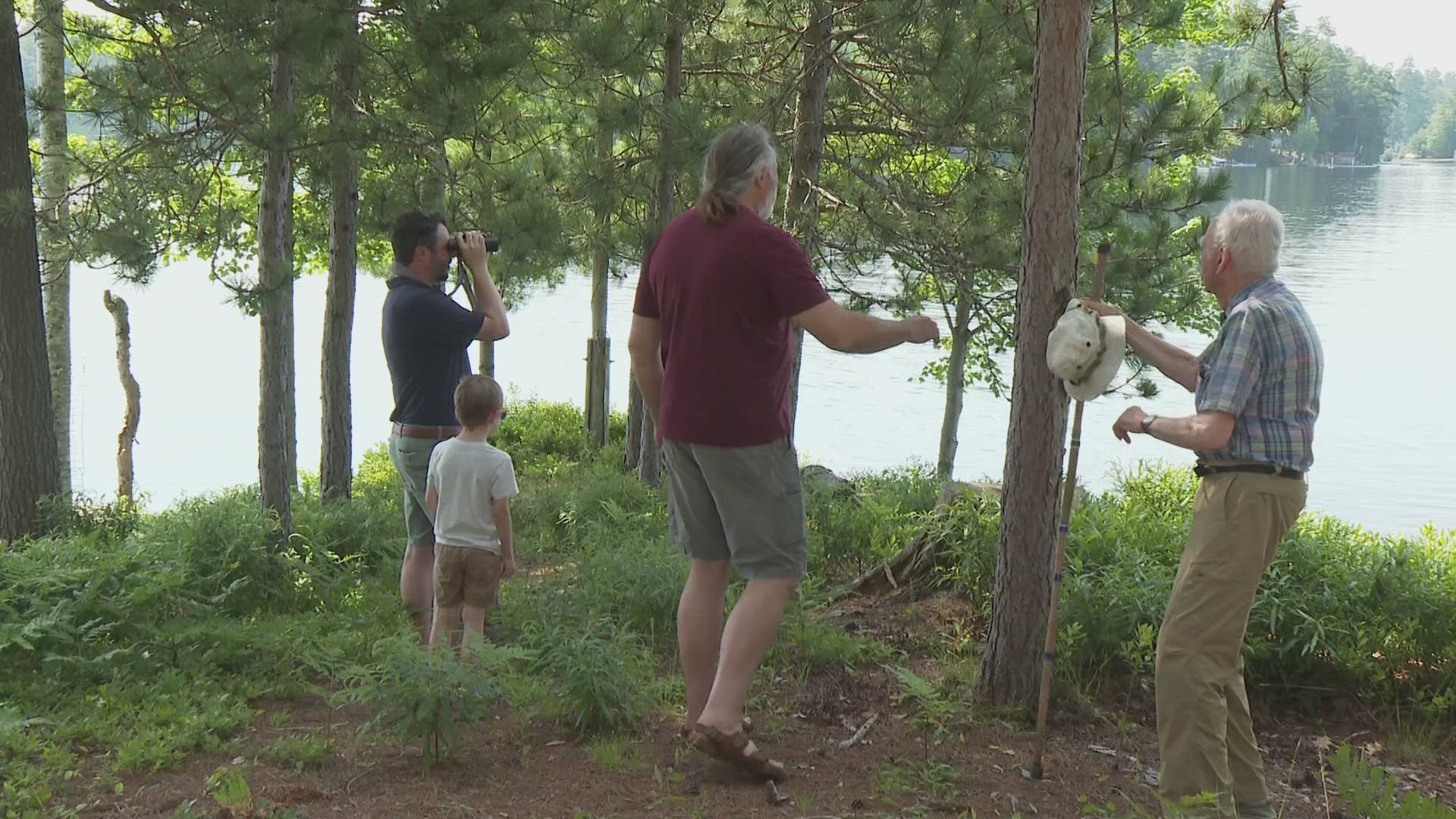MANCHESTER, Maine — Hodgdon Island isn’t large, but for the Lund family, it has been the center of summer for more than 80 years. And from their island camp on Cobbosseecontee Lake, known locally as Cobbossee, they have watched the loon population grow.
"They were rare," family patriarch Jon Lund said, who began spending summer on the lake when his family moved to the Augusta area in the mid-1930s.
"Loons were nowhere near as numerous as they are currently. 'Oh, there is a loon!' [someone would say.] Now they are [a] more common part of what you see out here."
The loon population has gone up throughout southern Maine, where Maine Audubon has been doing an annual volunteer loon count for the past 40 years. The 2022 count totaled 3,057 loons in the southern half of Maine.
The Lund family—Jon, son Alfred, grandson Nick, and great-grandson Elliot—all share a passion for the birds, and say they spend many hours on and around the lake, watching them.
"That’s what the lake means to me," Alfred explained as they stood on a point of the island watching two loons fighting in the distance. "It's really busy with nature, so much happening, and so many people don’t say it. So I study the loons and they show me a lot. Like they’re fighting over territory right now."
For Nick, the family passion for loons led him to work for Maine Audubon, where he is now director of advocacy. Loons, he says, are fascinating.
"How heavy they are," he cited as an example. "They have solid bones because it helps them. Most other birds have hollow bones to make it easier to fly. But they weigh as much as a bald eagle."
That weight, he says, helps loons fight off other predators and makes it easier to dive for fish. But it also poses a problem when they need to take to the air.
"When you see a loon [start to fly] it needs a quarter-mile of open water because it needs that much to get up to speed to get in the air."
But while loon numbers have been increasing on Cobbossee—the lake association says there were about 75 to 80 of the birds last year—they do face risks. And the Lund family is raising a warning about what they see as the biggest risk: a trend to new, faster boats with large wakes.
Loons typically nest very close to shore, Jon explains, and the larger wakes from those boats can flood nests and destroy eggs. He says the boats’ high speeds increase the risk of actually hitting a swimming loon or one that can’t get away fast enough.
"Because there’s not much you can do at 60 miles an hour to avoid impacting loons," Jon said. "And sometimes you’ll see a loon dead from impact, you see that out here. It's becoming the leading cause of loon mortality on this lake."
Lund said he would like to see speed limits for boats but admits that may not be easy to achieve. It will help, the family said, if boaters will simply slow down.
Bambi Neale of the Cobbossee Lake Association said they are trying to spread that message.
"We would like to have everyone understand to stay away from loons, admire them from afar, and do everything they can slow the boats down with wakes. That’s really what they can do."
For the Lund family, advocating for the loons is the least they can do for the creatures they love, on the lake that has now been an essential part of their own lives for more than 80 years.
"We are really lucky to have loons in Maine," Nick said as his 5-year-old son imitated the call of the loons. "There aren’t a lot of states that have the loons we have. Maine has the biggest population of loons outside Alaska."

